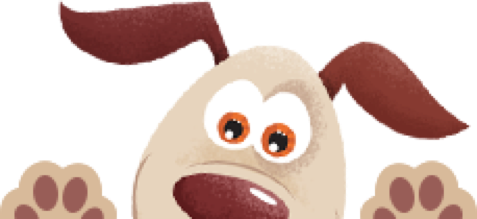Your dog is funny, special, and the apple of your eye, but you don’t have to love all your dog’s undesirable quirks. Whether you’ve adopted a dog or your dog has developed some bad habits, understanding why negative behavior has arisen is the first step towards correcting it. Swifto has rounded up some sure-fire training tips for five common “bad dog” behaviors.
1) Jumping on Guests
It can be embarrassing when your dog nearly bowls over your friends before a get-together, but there are effective ways to correct this behavior. For young dogs, make it clear that jumping up on people isn’t endearing. Every time your dog jumps up to greet someone, instruct them to “Sit” before you cuddle and greet your dog. For older dogs, try teaching the “Go to your spot” command. This way, your dog will calm down in their bed away from new guests, allowing socialization to begin in a relaxed and pleasant fashion.
2) Excessive Barking
Excessive barking may be a sign of separation anxiety. To calm your dog, leave an old item of clothing in their bed or by the door. Additionally, try ignoring your dog for the first few minutes after you leave home and when you return. This approach helps your dog understand that departures are normal and not a cause for distress.
3) Destructive Chewing
Understanding why your dog is chewing is crucial before correcting their behavior. Dogs may chew out of boredom, lack of appropriate chew toys, or irritated teeth or gums. Try adding an additional walk to your dog’s schedule or lengthening an existing walk. Consider buying various-sized balls or toys. Your small Corgi might love rolling large balls around, while your large St. Bernard might prefer tiny toys. If chewing persists, have your vet examine your dog’s gums for irritation.
4) Digging
Dogs have an instinctive urge to create dens. If your dog nervously digs at the carpet, they might be signaling that they feel hot and need some shade or a secure den. Try adding air conditioning or a fan to your dog’s environment or providing a dog bed or crate to make them feel secure.
5) Resource Guarding
If your dog growls when you approach them while they have food, a favorite toy, or are on their favorite chair, you may start feeling nervous around them. Guarding behaviors are normal in dog-to-dog interactions and can occur when a human is seen as too permissive. Stress from environmental changes, like a move or a new pet, can also cause guarding. Incorporate bonding sessions with your dog, go over old tricks, and reinforce your dominance. Hand-feeding or giving treats after feeding time can also help alleviate resource guarding behavior.
The Role of Regular Walks
Regular walks play a vital role in addressing many of these common dog behaviors. At Swifto, our experienced dog walkers ensure that your dog gets the physical exercise and mental stimulation they need to stay healthy and happy. Walking helps reduce boredom, which can lead to destructive chewing and excessive barking. It also provides a structured activity that can ease anxiety and promote better socialization.
Our professional dog walkers are trained to reinforce positive behaviors and can help manage issues like jumping on guests or resource guarding by providing consistent, positive interactions. By incorporating regular walks into your dog's routine, you can help mitigate many behavioral problems while ensuring your dog enjoys a happy, active life.
For more information on how Swifto can help with your dog walking needs, or to schedule dog walks, click on "Try Us Out" on the Swifto Homepage. Let us help you and your furry friend live harmoniously together.


